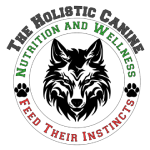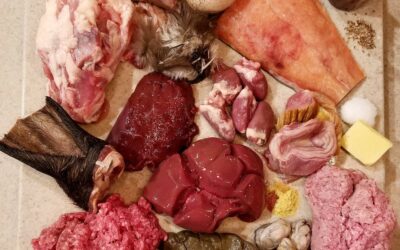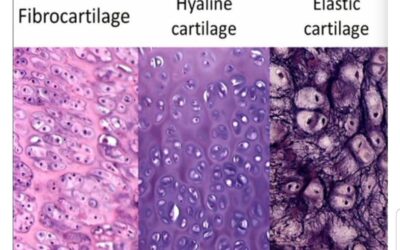Creating a nutrient balanced meal with a “better” ratio
Let’s talk ratios. Ratios provide a super simple outline or guideline for feeding our dogs species-appropriate foods. The most common ratio is still 80/10/10. What that means is…
- 80% meat
- 10% organs (secreting)
- 10% bone
Simple, right?! The problem with the above ratio is that many pet parents, and especially those new to raw feeding, do not understand that the 80/10/10 ratio is only a guideline and not an absolute set-in-stone plan to follow. Following the ratio too closely almost ALWAYS results in vitally important nutrients coming in consistently too low. This then increases the risk for health concerns down the road and often contributes to the disapproval that raw feeding has within the veterinary community. Feeding variety does help, but when a dog has protein sensitivities and limited proteins are being offered, providing nutrient balanced meals can become quite the challenge.
In my profession, I have the unfortunate job of seeing the bad side of raw feeding on a regular basis. Many pet parents come to me seeking “desperate” help. From my vantage point, raw feeding can look scary! Thus I created this blog and our Facebook group to be a resource and educational platform to help pet parents feed a more balanced (varietal and rotational) nutrition plan. I have mulled over a better ratio that will help pet parents feed a more nutrient balanced diet and still be able to follow a ratio. Let’s take a look…
| Standard Ratio | Better Ratio |
| 80% meat | 55% to 65% skeletal muscle + 15% to 25% organ muscle |
| 10% secreting organ | 3% to 5% liver + 5% to 7% other secreting organ (Don’t fall for the misconception that you can’t feed more than 10% secreting organs! Of course you can!) |
| 10% bone | MINIMUM bone 12% Whole prey has an average bone % of 12%. 10% bone is too low for most dogs and MUCH TOO LOW for puppies. |
Did you notice the percentage variation on the liver? This is important to discuss. Most pet parents feed chicken liver, beef liver, turkey liver, or pork liver. Chicken and beef livers are easiest to source. The problem with liver is that some have a very high amount (saturation) of copper and others have next to none. If you are feeding a full 5% of a high copper liver, then you are likely exposing your dog to too high an amount of the trace mineral copper. Worse yet, if your zinc levels are too low, which is very common in raw meals, then a zinc deficiency is a very real possibility. Zinc and copper need to be in the correct ratio. Let me reemphasize this. Even if you are just hitting your dog’s zinc requirements (at around 90% to 110%), but the copper is coming in at around 200% to even 250% of their copper needs (which can easily be achieved with 5% liver), then the zinc is TOO LOW.
High copper liver includes: beef, calf (veal), lamb, goat (extremely high!)
Low copper liver includes: pork, chicken, turkey
Moderate copper liver: duck liver
Options:
1) If you are feeding a high copper liver, 5% liver is going to be too high if you are not adding a zinc supplement, and even then, the copper is still a bit too high to be fed at 5% consistently.
2) If you are feeding a low copper liver, then 5% will not meet copper needs, thus adding oysters or a zinc/copper combination supplement will be necessary. (Oysters are naturally high in zinc and copper!)
3) Rotating with a high copper and low copper liver every other day is also an option as long as you pay attention to zinc in the daily meals.
Some raw feeding “professionals” recommend feeding liver even higher if you do not have another secreting organ to feed a full 10% secreting organs. The recommendation is to feed liver at a dangerous 10%. Please do not ever fall for this ill-advised recommendation. Your dog may be being exposed to copper at a dangerously high level as well as getting far too much vitamin A. The main concern is a nutrient imbalance leading first and foremost to a zinc and vitamin D deficiency as well as a possible forthcoming toxicity condition. Keep liver at 5% maximum or lower.
As for the 80% meat, if you feed only skeletal meat without any organ muscle, you will not hit nutrient requirements unless you are feeding your dog grossly too much food. Of that 80%, a MINIMUM of 15% should come from muscle organs such as heart, lung, gizzard, and tripe. In my opinion, that should be upwards of 20% as often as possible. I feed my dogs a combination total (muscle organs plus secreting organs) of a near 40% organs in most of their daily meals. The remaining is RMBs and a small percentage of boneless meat. This way I am not just barely meeting nutrient requirements, I am exceeding them in a balanced, well-thought out plan.
For bone, the 10% general recommendation is too low for most dogs. Whole prey has an average bone percentage of 12%. You can safely feed your dog 12% to 15% daily even up to 20%. I would not, however, exceed 25% bone. If you have a growing pup then you will need to feed a minimum of 15% up to, but not exceeding, 25%. Bone contains the base of minerals in the diet as well as bone marrow (where white blood cells, red blood cells, and platelets are made) and connective tissues (rich in glucosamine, chondroitin, and minerals) that contain a gold mine of value and nutritional components that are vital if optimal health and maintenance is your plan.
Ratio Quick view:
Skeletal muscle = 55% up to 65%
Organ muscle = 15% up to 25%
Secreting organs = 10% up to 12%
Bone = 12% to 18%
Work your dog up gradually to a higher overall organ percentage while also increasing bone percentage. Take it slowly and be patient!
©2019 Kimberly Lloyd, PhD, BCHHP, Cert Raw Dog Food Nutritionist



